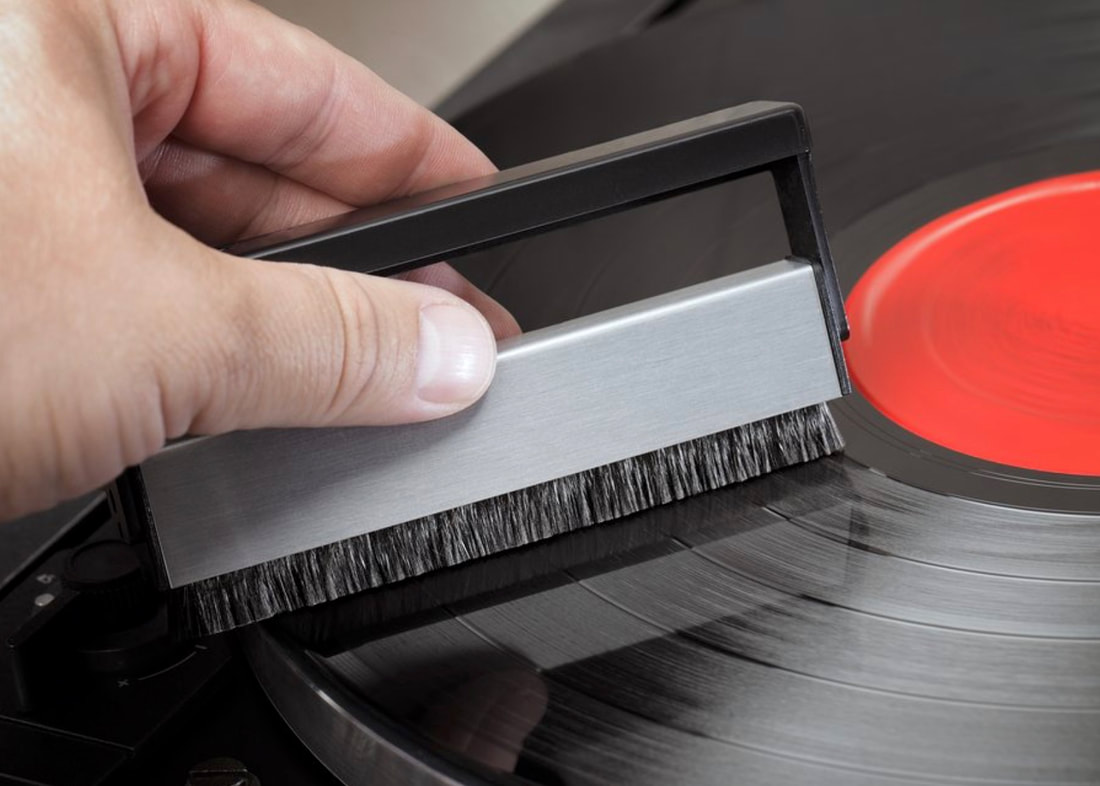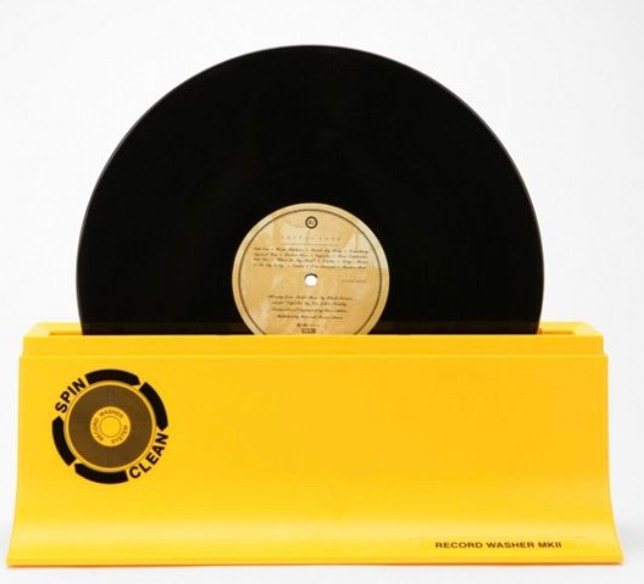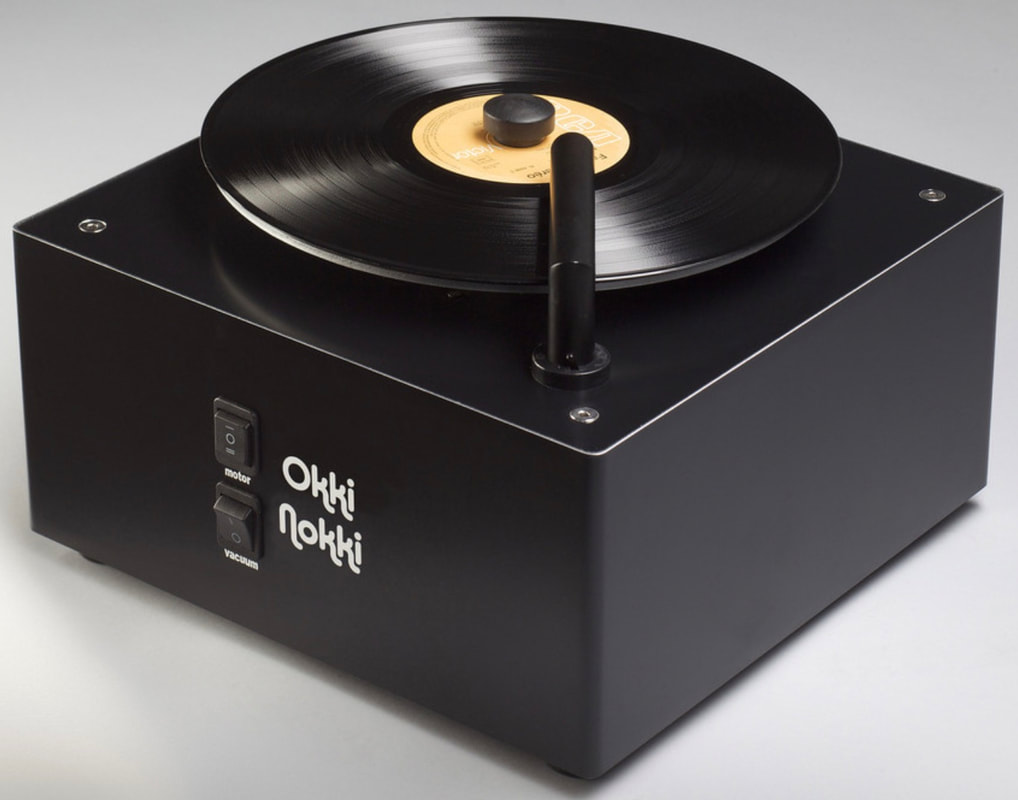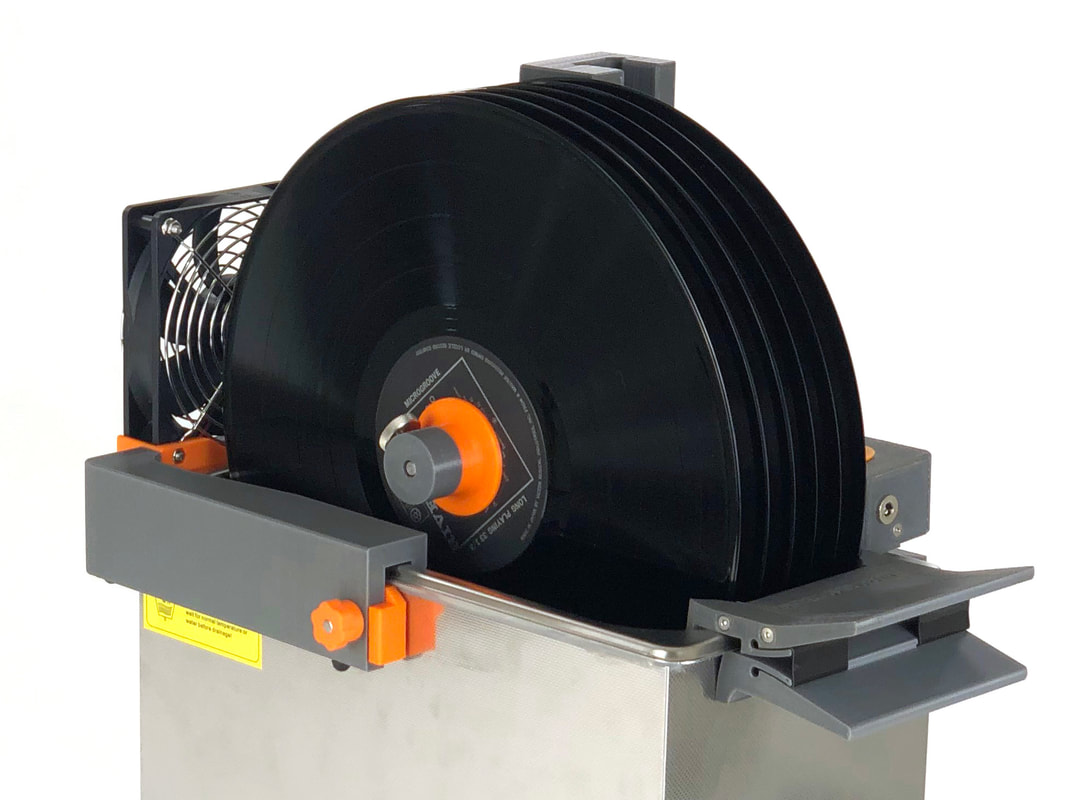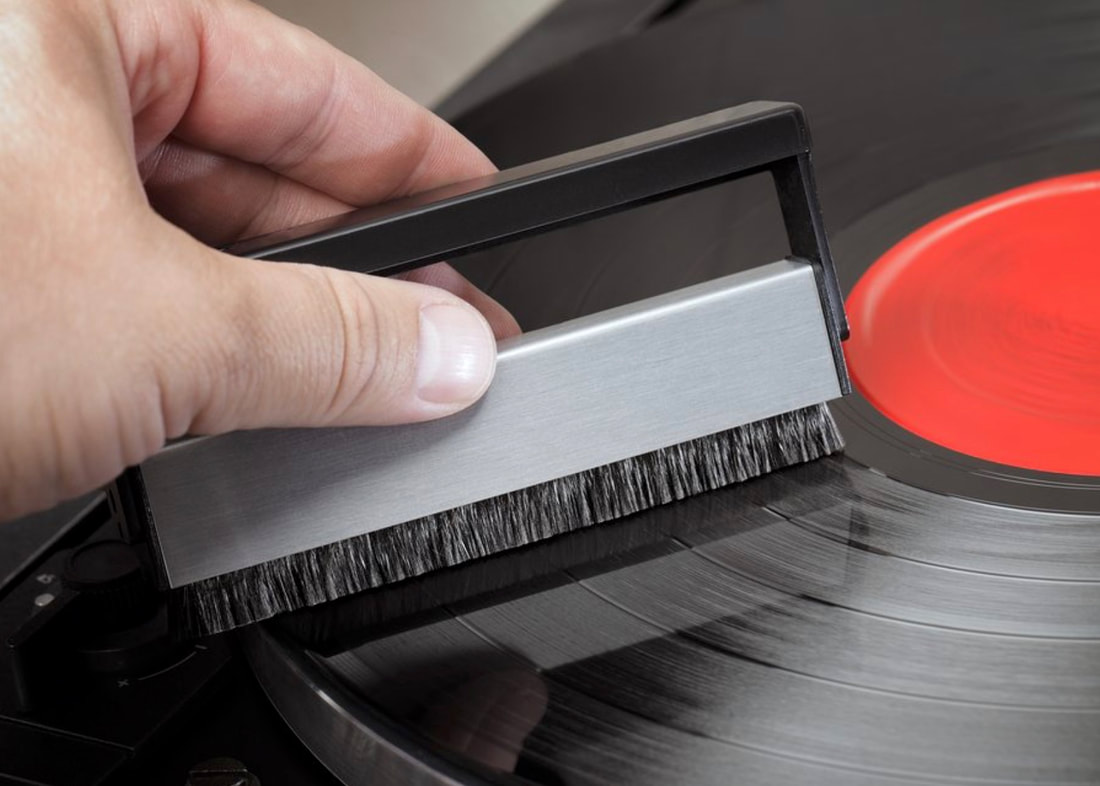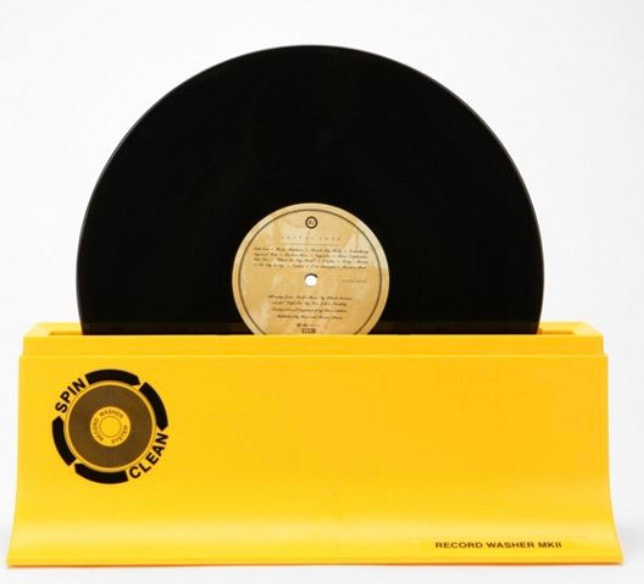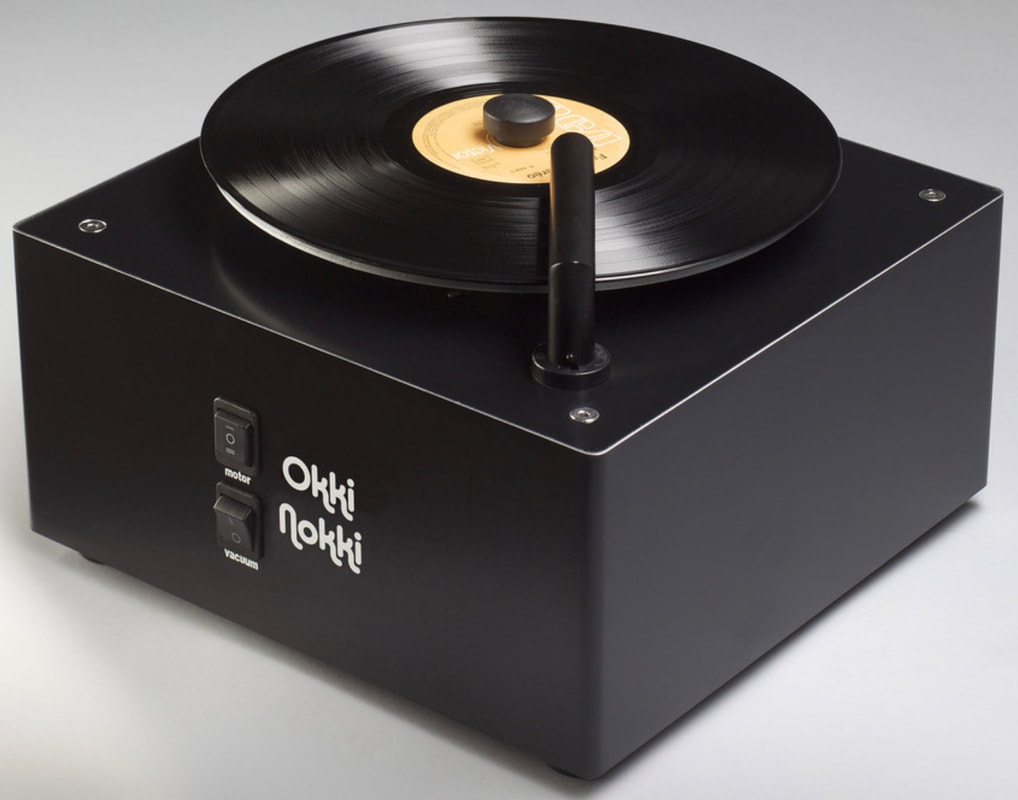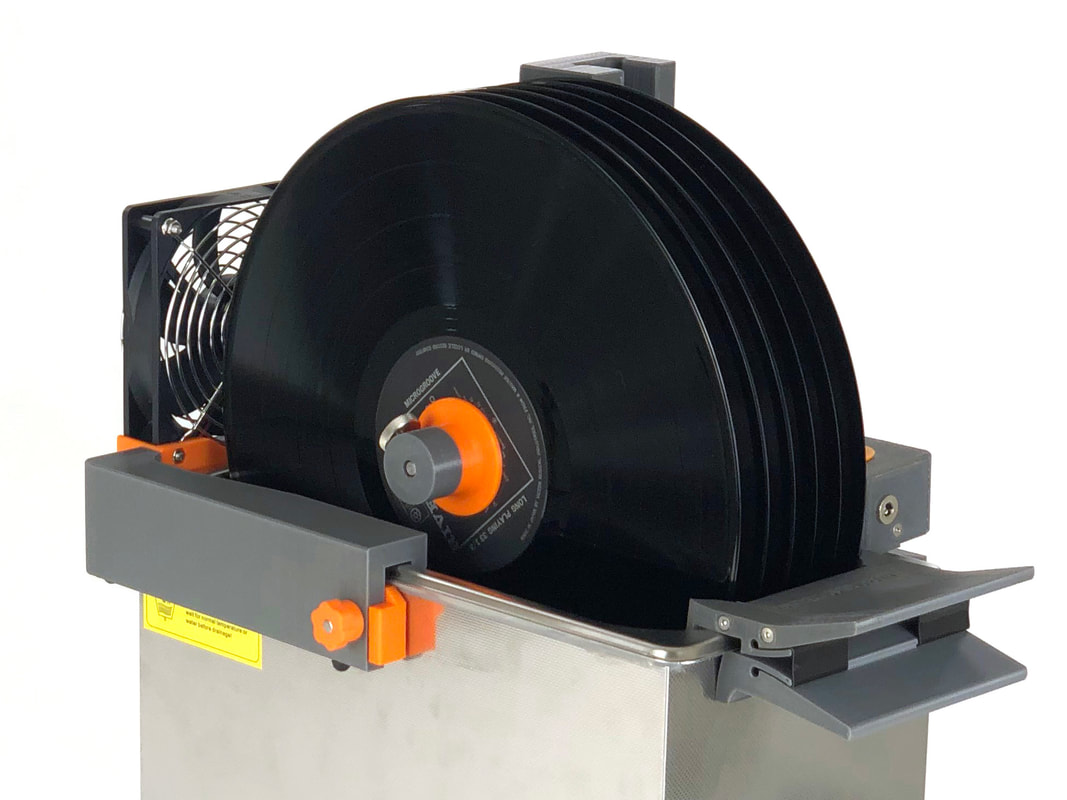What is the Best Record Cleaning Method?
There are four basic approaches to vinyl record cleaning:
|
Typical carbon fiber brush
A classic record washer
A classic vacuum based record cleaner.
CleanerVinyl Easy6 System. This vinyl record cleaning machine cleans 6 LPs at a time. Integrated, singles adapter, drying fan and state-of-the-art cleaning fluid filtration for superior results. Get records with a very low noise floor and strongly reduced cracks and pops!
|
What is the Best Record Cleaning Method?
There are four basic approaches to vinyl record cleaning:
1) Classic 'dry mechanical' techniques that use brushes, pads or sponges:
The best known of these is probably the carbon fiber brush, which is great for a quick removal of ambient dust that fell on the record while handling it.
Such techniques are not very effective for removing 'baked on' dirt like cigarette smoke residue, finger prints, mold etc...
Such techniques are not very effective for removing 'baked on' dirt like cigarette smoke residue, finger prints, mold etc...
Typical carbon fiber brush
2) Classic wet techniques that use chemical dissolution of the dirt. Pretty similar to dish washing:
These methods often use a small water/detergent filled vat through which the record is rotated by hand. Sponges or brushes immersed in the fluid help removal of the dirt that is softened by the water. A classic example of such a LP cleaner is the Spin Clean, which has been around since the 1960s.
These methods are a step up due to the presence of water and detergent, and similar to dishwashing they can be moderately effective. Disadvantages are that the brushes/pads do not penetrate well to the bottom of the grooves and dirt is missed by the cleaning action. Other issues are redeposition of dirt from the relatively small amount of water in the vat.
These methods are a step up due to the presence of water and detergent, and similar to dishwashing they can be moderately effective. Disadvantages are that the brushes/pads do not penetrate well to the bottom of the grooves and dirt is missed by the cleaning action. Other issues are redeposition of dirt from the relatively small amount of water in the vat.
A classic record washer
3) Classic record cleaning machines. Such machines usually combine a turntable with a cleaning wand. The wand can be based on a brush and/or fluid, or a vacuum system that removes loose dirt via suction.
- Such machines add convenience since the vinyl record does not need to be spun by hand.
A classic vacuum based record cleaner.
4) Ultrasonic record cleaning. This is the current state-of-the art method. Ultrasonic cleaning is an advanced cleaning technique that was developed for low-impact cleaning of intricate and hard to reach features in scientific and industrial environments. In recent years the prices for ultrasonic cleaning equipment have come down dramatically, making this technique available for home use.
This method uses sound waves in the ultrasonic ~40 kHz range that generate microscopic vacuum bubbles in the cleaning fluid. These bubbles 'cavitate' near the surface of the to be cleaned record and release powerful micro jets of water toward the surface that blast the dirt from the grooves. The main advantages of ultrasonic cleaning are:
- Touch-free, i.e. no introduction of micro scratches and other damages as is possible with brushes and wands.
- The cavitating bubbles can penetrate to the bottom of the grooves, i.e. they are very effective in removing the dirt from the entire surface of the grooves, not just the top part.
- No need for expensive cleaning additives.
- Several records can be cleaned at once, i.e. the method is fast and has a high throughput.
CleanerVinyl Easy6 System. This vinyl record cleaning machine cleans 6 LPs at a time. Integrated, singles adapter, drying fan and state-of-the-art cleaning fluid filtration for superior results. Get records with a very low noise floor and strongly reduced cracks and pops!
Does Ultrasonic Vinyl Record Cleaning Work?
|
Ultrasonic cleaning is a very effective touch-free way to clean your vinyl records. Please, watch the videos on the right (use headphones if possible) for before after demonstrations. There are more before/after videos on our YouTube playlist.
|
|
|
The CleanerVinyl Advantage
•Designed and manufactured in the USA
•We ship next-business day from Tampa, Florida
•Most destinations in the US are reached in 2-3 days.
•Free USPS Priority or UPS ground shipping within the US
•CleanerVinyl is available worldwide. See here for more info.
•1 year full warranty
•Fast and personal customer support.
•Custom designs possible. Just let us know what you need...
•Contact: [email protected]
•Satisfaction guaranteed
•We ship next-business day from Tampa, Florida
•Most destinations in the US are reached in 2-3 days.
•Free USPS Priority or UPS ground shipping within the US
•CleanerVinyl is available worldwide. See here for more info.
•1 year full warranty
•Fast and personal customer support.
•Custom designs possible. Just let us know what you need...
•Contact: [email protected]
•Satisfaction guaranteed
